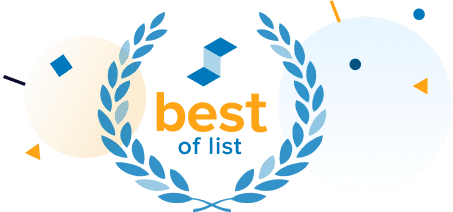Best HELOC Lenders
April 2024
A HELOC allows you to tap your home's equity without having to sell it. Here is SuperMoney's list of the best HELOC lenders currently available.

SuperMoney may receive compensation from some or all of the companies featured, and the order of results are influenced by advertising bids, with exception for mortgage and home lending related products. Learn more
Home equity lines of credit, also known as HELOCs, are a special type of home equity loan that gives you the option to draw money as and when you need it. In that sense they work much like a credit card because you only have to pay interest on the amount you withdraw, not the entire line of credit. However, the interest rates of HELOCs are much lower because they are secured by your home equity.
This makes HELOCs a great option for financing large projects without a fixed cost, such as home improvements, investing in real estate, or education expenses.
Here is SuperMoney's list of the best HELOC lenders currently available.
How does a HELOC work?
Home equity lines of credit come with a “draw period,” which is the amount of time you can withdraw money from the credit line. It typically ranges from 5 to 10 years.
When the draw period ends, you will either owe the balance in full (balloon payment) or will begin a repayment period. If you opt for the repayment period, your HELOC lender will restructure the outstanding amount into a loan that you pay back over a 10- to 20-year term through monthly payments.
How to find the best HELOC lenders?
The terms and rates of HELOCs vary significantly from lender to lender, so it's a good idea to shop around before you choose a home equity line of credit.
Here are the main things you will want to consider when comparing the best HELOC lenders.
- Interest rates
- Draw periods
- Access to funds
- Credit line limit
- Customer service
- Application and loan initiation processes
Interest rates
The interest rate a lender offers you will determine how much the HELOC will cost you. However, shopping for rates isn’t as easy as heading to a company’s website and looking at the interest rate advertised because the interest rate you get will depend on several factors, such as:
- Size of your line of credit
- Lien position the HELOC
- Combined loan-to-value ratio
- Property type
- Your creditworthiness
You will need to apply for a HELOC before you know your rates and terms. The HELOC lenders above are a good place to start when comparing HELOC lenders with the lowest interest rates.
Draw and repayment periods
The draw period varies from one lender to the next. Be sure to check this detail. Additionally, check the repayment period, and ensure you will have enough time to pay off your balance.
Fees
Look out for fees or closing costs. Some lenders charge you to apply or to close the account early. Others charge closing costs to all customers, or to customers with high credit lines (i.e., for credit lines of $1,000,000 or more).
Access to funds
Check to see how you will be able to access the funds from your HELOC. Here’s a summary of common access options:
- Visiting a financial center
- Transferring funds online to a checking account
- A credit card
- HELOC checks
Credit line amount
The maximum line of credit you can qualify for will depend on how much equity you have on your home. However, some lenders have higher maximum debt-to-equity maximums than others. For instance, one lender may only consider lines of credit up to 80% of your home equity while others will go up to 90%. If you are looking at taking out a large credit line, be sure to check where lenders top out.
For example, if you have $100,000 of equity in your home, you might be able to get a credit line of $80,000 to $90,000 depending on the lender you choose.
Customer service
Check the reviews of other SuperMoney users to see how well lenders treat their customers. If an issue comes up, you want a lender that takes pride in its customer service.
Application and loan initiation processes
Many lenders have online application processes that take about 15 minutes to complete, but not all. Underwriting policies and the steps involved in appraising properties and disbursing funds also vary by lender./p>
By weighing these factors, you will be able to narrow down the many lenders available to find the right one for you.
HELOC requirements
Eligibility requirements vary from lender to lender, but here is a quick summary of common HELOC requirements.
- U.S. citizen or permanent resident.
- A good credit score (at least 680 in most cases, though some lenders may approve a small percentage of people with scores of 680 and below).
- Sufficient equity in a home (you can typically borrow 80% to 90% of your total equity from most lenders).
- A qualifying combined loan-to-value ratio (looks at the remaining balance on your mortgage, home equity line amount, and other liens on the property in relation to your property’s value).
- A debt-to-income ratio of 47% (sometimes 43%) or less.
- Other factors: Good performance in prior mortgages, owner-occupant property, sufficient income, an acceptable length of employment, and a lack of significant expenses.
HELOC loan-to-value ratio requirements
Most HELOC lenders require that borrowers have a combined loan-to-value (CLTV) ratio of 85% or less for a home equity line of credit. If your CLTV is too high, you will need to either pay down your current mortgage amount or wait to see if your home increases in value.
Pros and cons of HELOCs
Home equity line of credit costs and fees
When comparing the best HELOC lenders, it is smart to look at the overall cost and the individual fees they charge.
HELOCs usually charge a combination of upfront and ongoing fees. The upfront fees are typically fixed, but you can often avoid many of the ongoing fees.
Here is a summary of the most common costs associated with a HELOC.
HELOC closing fees: Some lenders charge application and origination fees. However, there are several that don't, so it pays to shop around.
Maintenance fees: Some lenders will charge a recurring fee to pay for the costs of maintaining your HELOC account. Notice that many lenders waive this fee the first year.
Minimum withdrawal: Depending on the fine print of your HELOC agreement, there might be a minimum amount that you are required to withdraw whenever you decide to tap into your equity. This can result in an added, unwanted interest cost, because it might force you to take out more money than you need.
Early termination fee: Some lenders will expect you to keep your HELOC open for a certain amount of time. If you close the account earlier, you may be hit with a cancellation fee.
Inactivity fee: In some cases, HELOC lenders will charge a fee if you don't have sufficient activity in your account within a period of time.
Fixed-rate conversion fee: Most HELOC lenders charge a variable rate. This means they may vary based on the overall market interest rates. In contrast, home equity loans usually offer a fixed interest rate. However, some HELOCs allow you to convert your variable rate to a fixed rate for a fee. Converting your HELOC to a fixed rate may be a good idea in some cases, but make sure you understand your options and read the fine print before making any changes.
HELOC alternatives
There are three main alternatives to HELOCs if you are considering home equity financing: cash-out mortgage refinancing, home equity loans, and shared equity agreements.
Home equity loans
Home equity loans give homeowners the option to get a lump sum and pay it back over 5 to 30 years at a fixed interest rate. This makes it a good choice for people with large cash needs who want a fixed monthly payment and competitive interest rates. However, you typically need good credit and substantial home equity (15% to 20%) and since your home is used as collateral -- as with most home equity financing options -- you risk losing your home if you default.
Cash-out mortgage refinancing
Cash-out mortgage refinancing allows you to tap into your home equity with a first mortgage instead of through a second mortgage. This avoid the need of a second payment and could even lower the cost of your current mortgage if you qualify for a lower interest rate. Mortgage lenders will usually require 10% to 20% equity left after the refinance.
Shared equity agreements
Shared equity agreements are probably the most flexible type of home equity financing. They don't require getting into debt or even monthly payments because you actually sell a slice of the future equity of your home. When your home is sold (or when the contract term ends), the investors receive their share from the sale. If the value of the house increases, so does the amount the investor receives. If the house drops in value, the investor also shares in the loss.
Get the best rate possible
It's difficult to know you are getting the best deal if you have not compared it with other offers. Some borrowers avoid applying to several lenders because they worry it will hurt their credit. However, credit bureaus typically count all home equity financing inquiries as one credit inquiry as long as they are made within a 30-day period.
Request a quote from three or more lenders to see which one offers the best rates and terms. Even small differences in rates and fees can save you thousands over the life of a line of credit or loan. SuperMoney's list of the best HELOC lenders is a good place to start.
About the Author

SuperMoney
SuperMoney is the most comprehensive financial services comparison site around. We have published hundreds of personal finance articles and provide detailed reviews on thousands of financial products and services. Our unbiased advice and free comparison tools help consumers make smart financial decisions based on hard data, not marketing gimmicks.